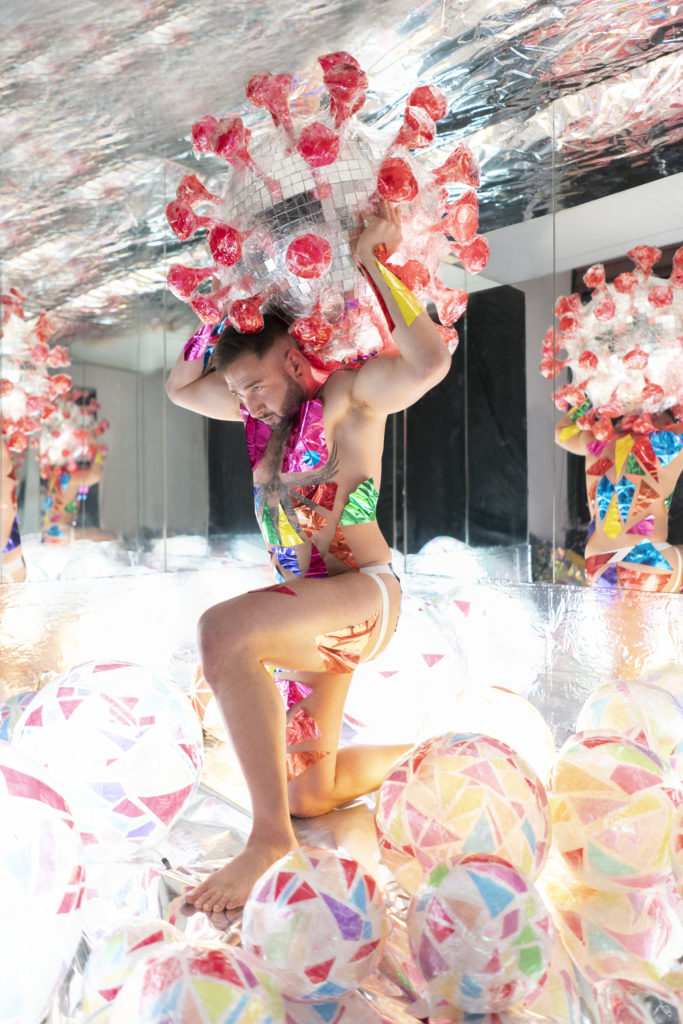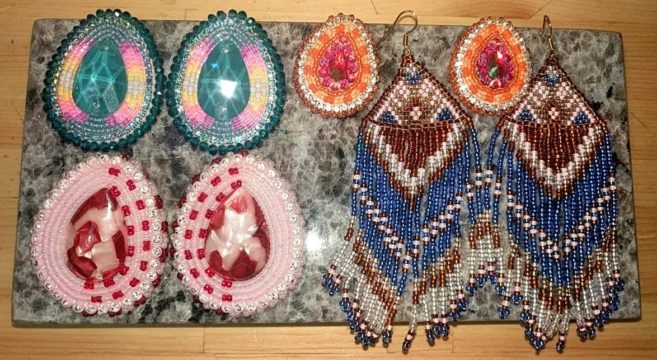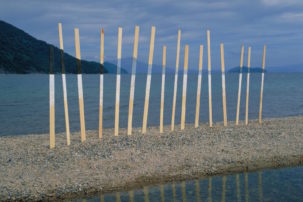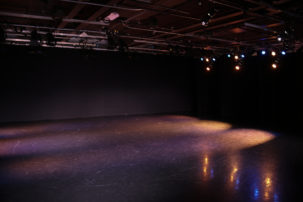It can be difficult as an Indigenous artist who is differently abled navigating within the world of art institutions. Even when the best efforts are put into accommodations, curators and directors often lack the perspectives that differently abled people and Indigenous communities experience. As a result, galleries can be very ineffectual at accommodation, while providing superficial solutions that aren’t necessarily driven by the needs of the artist. In addition, there can be a lack of culturally sensitive communication; the use of gentle reminders can be fantastic for people who have lived with intergenerational trauma.
For many years, the apparent answer for art institutions in Canada seemed to be the tokenization of just a few representatives of BIPOC and disabled artists. The only option was a narrow and forced representation that excluded a multitude of realities while portraying the institutions themselves as inclusive. In the 1960s and ’70s, some Indigenous artists became groundbreaking representatives, like Daphne Odjig, Norval Morrisseau and Kenojuak Ashevak, but these were few and far between. For decades to come, this handful of artists defined Indigenous art for a generation of curators and gallerists. These artists, by their genius, created their own unique aesthetics that came to define the idea of what Indigenous art is “supposed” to resemble. Their seminal works have become a stereotype that the community is still fighting to break. I see artists such as Rebecca Belmore and her brother Michael Belmore, as well as Barry Ace and Robert Houle, take on that challenge: they have an interpretation rooted in their culture, but with a contemporary eye to materials and form, while creating the modern Indigenous urban aesthetic.
I experienced the consequences of these stereotypes while trying to find funding agencies to develop my work. What I encountered on my path looking for assistance was a predefined colonial view of what Indigenous art was made of: leather, sinew and beads were funded—packing tape was not. It was only recently that funding agencies relaxed this definition to include non-traditional materials.
As a multiple-chemical-sensitive person—which is a person who cannot tolerate volatile organic compounds found in paints, adhesives and perfumes—the resources that I use are limited and innovative at the same time. Living with multiple chemical sensitivities, I have to avoid exposure to toxic materials. This means that the materials I use must have a low toxicity; packing tape fits this criteria, so I use it. University arts programs usually want to use certain “professional” materials, such as oil-based paints, which are frequently the most dangerous for me. I am more likely to use non-toxic children’s materials, and in this country there is a snobbery around the use of “professional” materials when creating artworks. On the one hand, my work ends up being unique in the arts scene for using non-traditional materials, but on the other hand, I am unable to work with the traditional materials that conform to the collective image of what is Indigenous art. I can’t work with commercially tanned hides or glues, such as those used in more traditional wearable Indigenous art, for the same reasons: because they can also release harmful volatile organic compounds due to chemical tanning processes or chemicals added. I struggle to work with paint because of the fumes, so I can hardly produce the classic Woodland School painting style. Instead, I hand-carve discarded floor and wall ceramic tiles to create mosaics. I use cellophane and packing tape to construct my wearable art, because as a disabled artist I require these lightweight, inexpensive and non-toxic materials which have become the cornerstone of my art practice. But many agencies still define Indigenous art as simply a collection of “tried and true” styles of painting, allowing only for different adaptations of traditional attire and beadwork and excluding all novelty. Preservation of tradition is important, but by considering only the “traditional” styles, we restrain the creativity of our community and cater our art to be more appropriate for an anthropology museum than for a modern art gallery.
Don’t get me wrong, tradition and memory are fundamental for Indigenous communities to form an intrinsic part of our identities, but by using these archetypal representations of Indigenous art alone, as the only possible interpretation of our experience, we become amorphous tokens, stripped of our individual identities. In reality, our identities are current, modern and ever-changing toward the future. There’s a need to remove the idea of that romanticized image of a Native on horseback as an entrée in commercial galleries; we need to broaden our horizons at all levels, from street-front souvenir shops to high-end galleries in luxury hotels.
There are a handful of us who reach visibility and gain access to Canada’s mainstream art scene. Publishers will frequently only bother getting to know one representative of these marginalized communities and call it a day. At one point, I encountered a big name in one of our national art spaces and they had no idea about the Sixties Scoop. This prompted many questions from me: How can someone who chooses who is going to represent my community be allowed to be so ignorant of it? How can they understand how the trauma from the residential school system influenced the development of Indigenous generations since? I wondered, if his inclusion was so shallow, then how could he understand the perspective of disabled artists? Of any group facing marginalization? What do galleries do to compensate for this lack of perspective? Galleries will grant minimal access to disabled people and call themselves inclusive even though there are many outside who are trying to be heard. Galleries will grant minimal access to disabled people and call themselves inclusive—even though there are many still with disabilities on the outside who feel they continue to be forcibly excluded.
These efforts are appreciated, but are not really representation. For instance, land acknowledgements performed by settlers, which can be seen as symbolic lip service and token representation, rather provide an example of the few ignoring the many. The most powerful acknowledgements I have heard come from galleries who bring in local Indigenous Elders speaking to their lived experiences. Real representation will only come when galleries employ Indigenous and/or disabled curators to choose the representatives of our own communities.
One solution might be a national disabled arts gallery, such as Toronto’s Tangled Arts + Disability but with a national scope and the funding to match. It will be interesting to see how the former Indefinite Arts Centre in Calgary will grow and develop on the national level, now that it has been rechristened as the National accessArts Centre for artists with disabilities. The arts community held an event called The Republic of Inclusion during Canada’s 150th celebrations in Ottawa, which brought together people from all over the country from all disciplines of the arts. This became an incubator to empower disabled artists to excel and push their careers forward. Participants in the conference were able to talk to five members of the Canada Council and learn what resources were available to them. The establishment of a permanent institution could expand on this initiative to provide space and resources for those in need and provide fertile ground to bring together all the disciplines and allow for collaboration among those of us who are so often surrounded by systemic barriers. A national gallery whose focus is to help disabled people overcome societal barriers could continue the renaissance of disabled arts demonstrated by the work done by The Republic of Inclusion.
Recently I was approached by a reporter who was looking for a disabled Indigenous artist who could speak French comfortably in an interview. He was looking because the only artist he knew who fit the description had passed away. Just having one go-to person from a marginalized community is not enough. I thought then that if we had funding for a national gallery for disabled artists as a whole, it would allow for more direct communication between artists and those who wish to hear their perspectives.
The good news is that certain galleries, curators and arts organizations are doing it right. This is by no means and exhaustive list: Arts Accessibility Network Manitoba is providing a mentor program, bringing together experienced artists with the up-and-coming. Tangled Art + Disability in Toronto, which travels to other cities with exhibitions and brings artists from all over the country to exhibit with them, provides funding for support persons and creative solutions to remove barriers and excel at communication; Creative Users Projects, a weekly newsletter, brings together opportunities for disabled artists from across the country; and Bodies in Translation, created by Revision: The Centre of Art and Social Justice at the University of Guelph, is an extensive research project and database involving disabled artists.
Curators such as Sean Lee, Sylvia June Dreaver and Tobaron Waxman all make the effort to provide an inclusive space for disabled Indigenous artists. These curators seek out BIPOC and disabled artists to include them in many group exhibitions and panel discussions. In some respects, being a BIPOC or disabled artist means you are an activist. At the intersection of being disabled and BIPOC, you must advocate for yourself, and for some that advocacy grows to include their whole community. Some of these artists take their message to the street. For instance, Syrus Marcus Ware, one of the core-team member of BLM Toronto, helped coordinate the painting of BLM imagery on Toronto’s streets, continuing his advocacy for defunding the police. Similarly, Christi Belcourt, a Michif artist who travelled Canada with the “Water Is Life” anti-pipeline movement, is also a powerful activist for her community and Indigenous rights.
“It’s not the wheelchair that’s the problem, it’s the building with stairs that’s the problem,” says Yvette Cenerini, a disabled francophone artist from Winnipeg. She has said that we are entering a disability arts golden age. There’s more visibility than ever before of the diversity for both artists with disabilities and Indigenous artists. Galleries are seeking out more diverse visions and intersections. They have begun to foster marginalized groups and amplify powerful, diverse voices by asking us not only what our access needs are, but also what we think and how we feel. And as artists do, we will tell you that through our art.
This essay was written with assistance from Mariano Sequeira and Lucille Dumont.

 Michel Dumont, Atlas Struggling with Covid-19, 2020
Michel Dumont, Atlas Struggling with Covid-19, 2020







